|
The
Collectability of Vintage Cameras
by Bob Brooke
Now that digital photography has
become firmly a part of people’s lives, people want to know what to do
with their old 35mm cameras. Even though photography has been around for
well over 150 years, it’s taken a long time for traditional photographic
gear—cameras in particular—to become collectible.
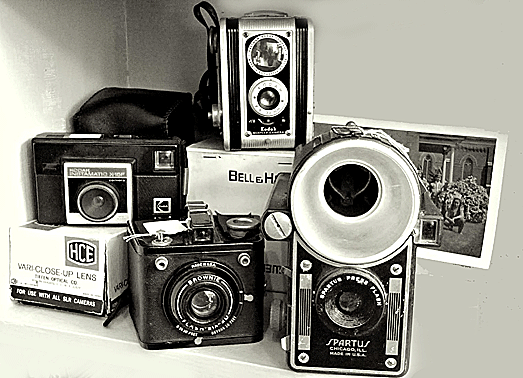
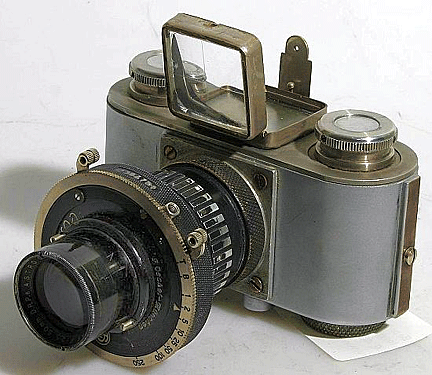 Today,
old cameras dot the tables at yard sales and flea markets. Most are 35mm
castoffs, but a few are older. With the ease of taking photos with a
digital camera, let alone not having to buy film, it’s no wonder dealers
have so many cameras and lenses on hand. But are these recent castoffs
worth anything in the collectible market? That’s the big question. Today,
old cameras dot the tables at yard sales and flea markets. Most are 35mm
castoffs, but a few are older. With the ease of taking photos with a
digital camera, let alone not having to buy film, it’s no wonder dealers
have so many cameras and lenses on hand. But are these recent castoffs
worth anything in the collectible market? That’s the big question.
Unfortunately, in the world of photographic memorabilia, relatively
recent 35mm cameras aren’t worth much unless they’re classic cameras or
rare or unique models. Over 30 years after the introduction of digital
cameras, the value of used 35mm cameras still hasn’t risen much.
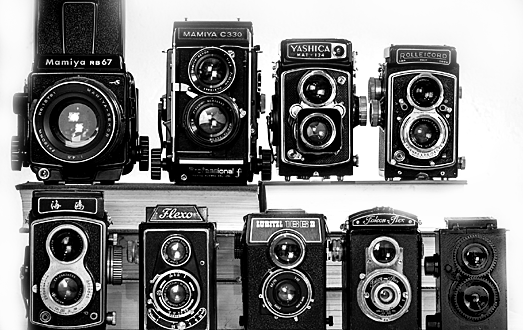
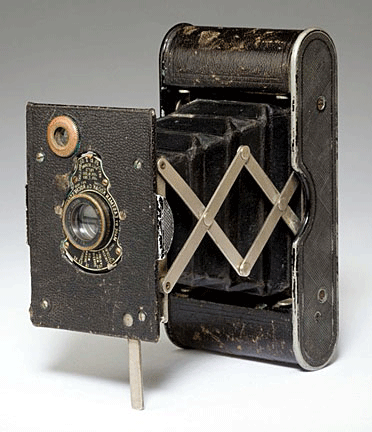 So
what types of cameras can be collected without breaking the bank? There
are lots of modern cameras that have long ago outlasted their usefulness
that can create an interesting camera collection. You can pick up a
decent 100-year-old Kodak box camera for about $10 to $25 at flea
markets. Folding cameras go for a bit more. So
what types of cameras can be collected without breaking the bank? There
are lots of modern cameras that have long ago outlasted their usefulness
that can create an interesting camera collection. You can pick up a
decent 100-year-old Kodak box camera for about $10 to $25 at flea
markets. Folding cameras go for a bit more.
Established by pioneering George Eastman in 1888, Kodak soon became one
of the world’s most widely recognized brands. Photo historians credit
Kodak’s first box camera with broadening the appeal of photography to a
wider audience, as these cameras were both less expensive and easier to
operate than those designed for professional use.
There are two types of 35mm cameras—rangefinder and single lens reflex.
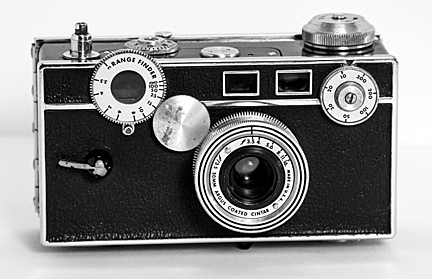 Rangefinders
were the first cameras to use 35mm movie film to create still
photographs. These cameras came outfitted with an additional rangefinder
that allowed the photographer to assess distance in their frames to
capture precise, clear images. But these rangefinders had a problem. The
image the photographer saw in them was slightly shifted to one side, so
the resulting image wasn’t exactly what the photographer saw. The Kodak
3A, which was introduced in 1916, was the first of the brand. The most
famous rangefinder cameras were Leicas, precision optical cameras made
in Germany. These became the camera of choice for photojournalists. Rangefinders
were the first cameras to use 35mm movie film to create still
photographs. These cameras came outfitted with an additional rangefinder
that allowed the photographer to assess distance in their frames to
capture precise, clear images. But these rangefinders had a problem. The
image the photographer saw in them was slightly shifted to one side, so
the resulting image wasn’t exactly what the photographer saw. The Kodak
3A, which was introduced in 1916, was the first of the brand. The most
famous rangefinder cameras were Leicas, precision optical cameras made
in Germany. These became the camera of choice for photojournalists.
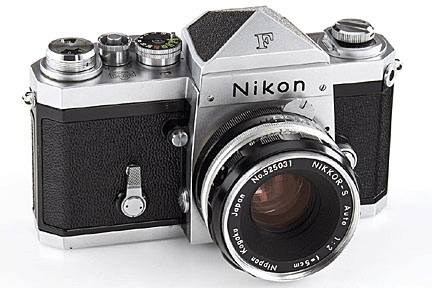 Though
first patented in the 1860s, the single lens reflex (SLR) camera didn’t
become popular as a consumer and professional camera until the 1960s.
The SLR camera created crisp images with exceptional color thanks to its
use of a complex combination of a mirror that moved with the shutter and
a prism that refracted light to capture the image. Though
first patented in the 1860s, the single lens reflex (SLR) camera didn’t
become popular as a consumer and professional camera until the 1960s.
The SLR camera created crisp images with exceptional color thanks to its
use of a complex combination of a mirror that moved with the shutter and
a prism that refracted light to capture the image.
Founded in the late 1910s, primarily
as a lens manufacturer, Nikon grew over the course of the 20th century
to become one of the leading producers of both lenses and cameras. The
company’s SLR cameras dominated the market in the 1950s with their
modular camera systems that afforded users a variety of compatible
camera components that could be changed out depending on conditions and
preferences. So trusted was Nikon camera technology that they became one
of the main suppliers of cameras to NASA.
Besides the standard SLRs, there are a limited number of other cameras
that served unusual purposes---detective cameras, often designed to look
like books or handbags, miniature cameras, panoramic cameras for
photographing landscapes or large crowds, and stereo cameras used to
produce the stereoscopic cards that were so popular between 1880 to
1910.
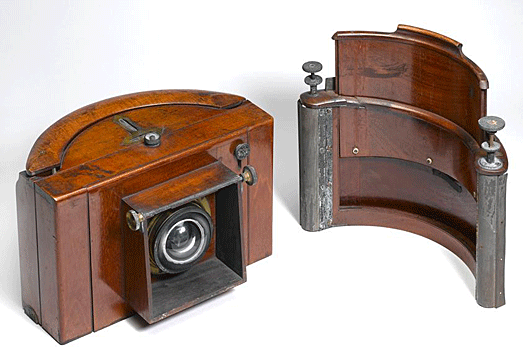
Camera collecting is one category that’s easy to get into. For the
serious collector, the range is quite broad, so specializing in one
particular brand or type isn’t only possible but desirable.
So what types of cameras are collectible without breaking the bank?
There are lots of modern cameras that can create an interesting camera
collection. A 100-year-old Kodak box camera can usually be found at flea
markets for about $25 to $35 at flea markets. Folding cameras go for a
bit more. There are also lots of other cameras, like Kodak’s Brownie
that can be a start to a modest collection.
< Back to Collecting Archives
Next Article >
|
